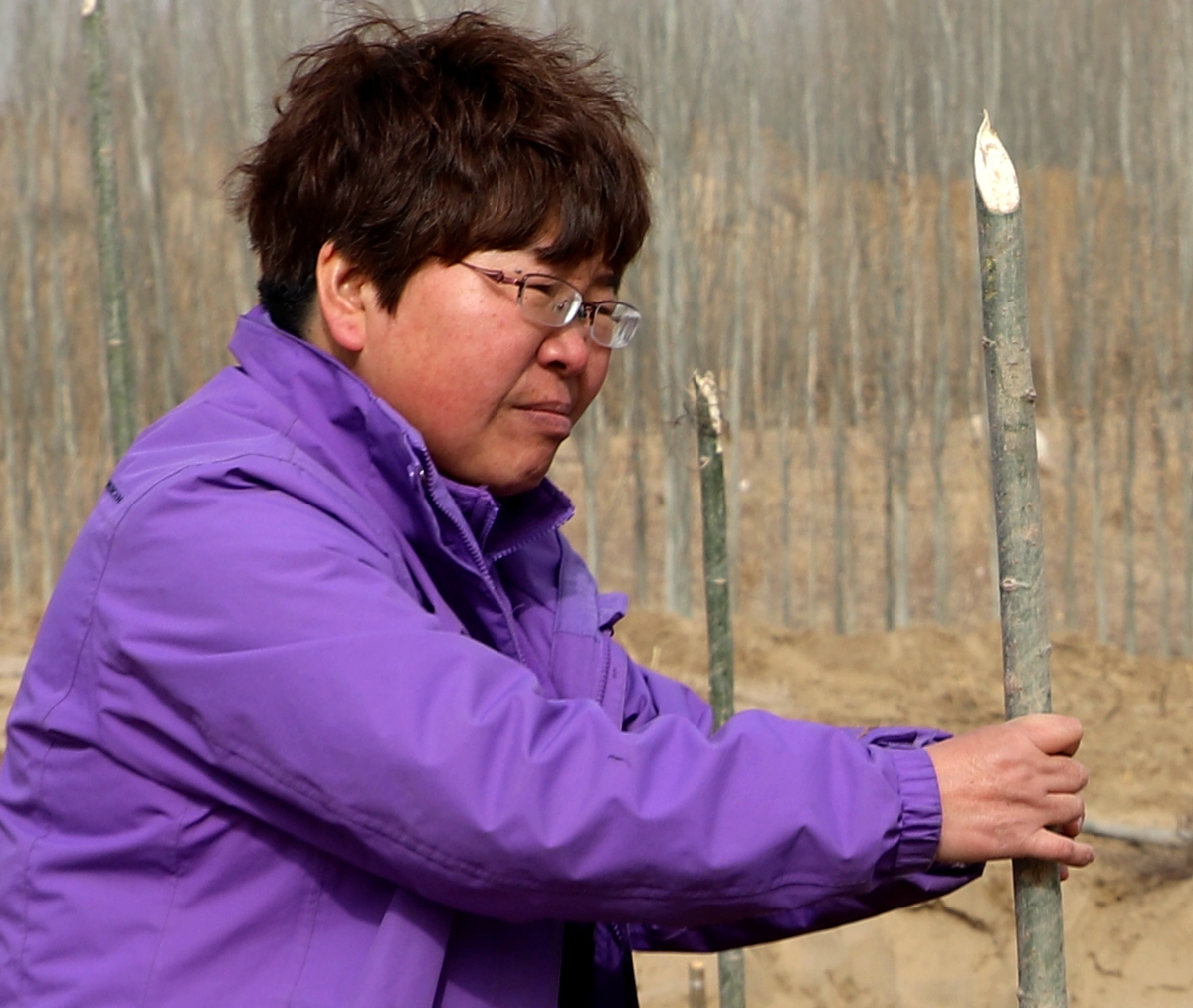The scale of the effort made is amazing


Chao Dairong, deputy director of the Yecheng county agriculture and rural affairs bureau, Kashgar, Xinjiang.
I came to Yecheng in 1997 after graduating from a junior college in my home province of Shandong. I only intended to try my luck in the "mysterious far west" for a while. I never imagined I would be here for so long.
I had to get used to the climate. The sandstorms were wild, and after work I usually went home covered in thick dust. The leaves on the trees were never green, just grey. Also, my nose bled a lot in those days.
There were very few trees. If you look at a map of the county back then, greenery can only be seen within the urban areas of the more-than 31,000 square kilometers under our jurisdiction. The rest was the golden sand of the Taklimakan Desert.
As I worked, I realized that trees really meant something special to the local people. Irrespective of financial status, every family would plant as many trees as they could around their house.
Xinjiang has the best climate for fruit cultivation because temperatures vary greatly between day and night, which helps the sugar buildup in the fruit.
However, even more-resilient crops, such as corn, cannot survive in the desert if there are no trees to keep sandstorms at bay.
Yecheng's afforestation project started in 2015. The groundwork involved nearly every government employee. In Xinjiang, it's compulsory for every resident to plant at least three trees every year.
I remember an article I studied in Chinese class in junior high school. The text was called "Ode to the Poplar".
The author wrote impressively about poplars standing tall and upright in the Gobi Desert in Xinjiang.
Because of its towering height and resilience in dry climates, the tree has been widely used in the fight against the ever-expanding Taklimakan.
Afforestation work in deserts is quite different from planting trees in places with sufficient rainfall and soil. The work requires more irrigation and labor than elsewhere, which means far higher financial input. The harsh environment in the desert poses challenges for the planters, too.
Poplars need to be planted more densely than other trees. Only by doing so can they shoot towards the sky to claim more sunlight.
The taller they are, the more effective they are at curbing wind erosion.
It's amazing to look at the sheer scale of the efforts made in Xinjiang's vast deserts.
Chao Dairong spoke with Li Lei.
- China unveils flexible urban planning rules to improve lives, foster new industries
- Ex–China Construction Bank executive gets 18 years for bribery, loan violations
- First batch of eco-friendly pioneer zones for construction of beautiful countryside unveiled
- Woodpeckers, finches captured in Jilin winter scenes
- Mainland reiterates 1992 Consensus as foundation for resuming cross-Strait dialogue
- PLA drone training near China's Dongsha island lawful: spokesperson




































